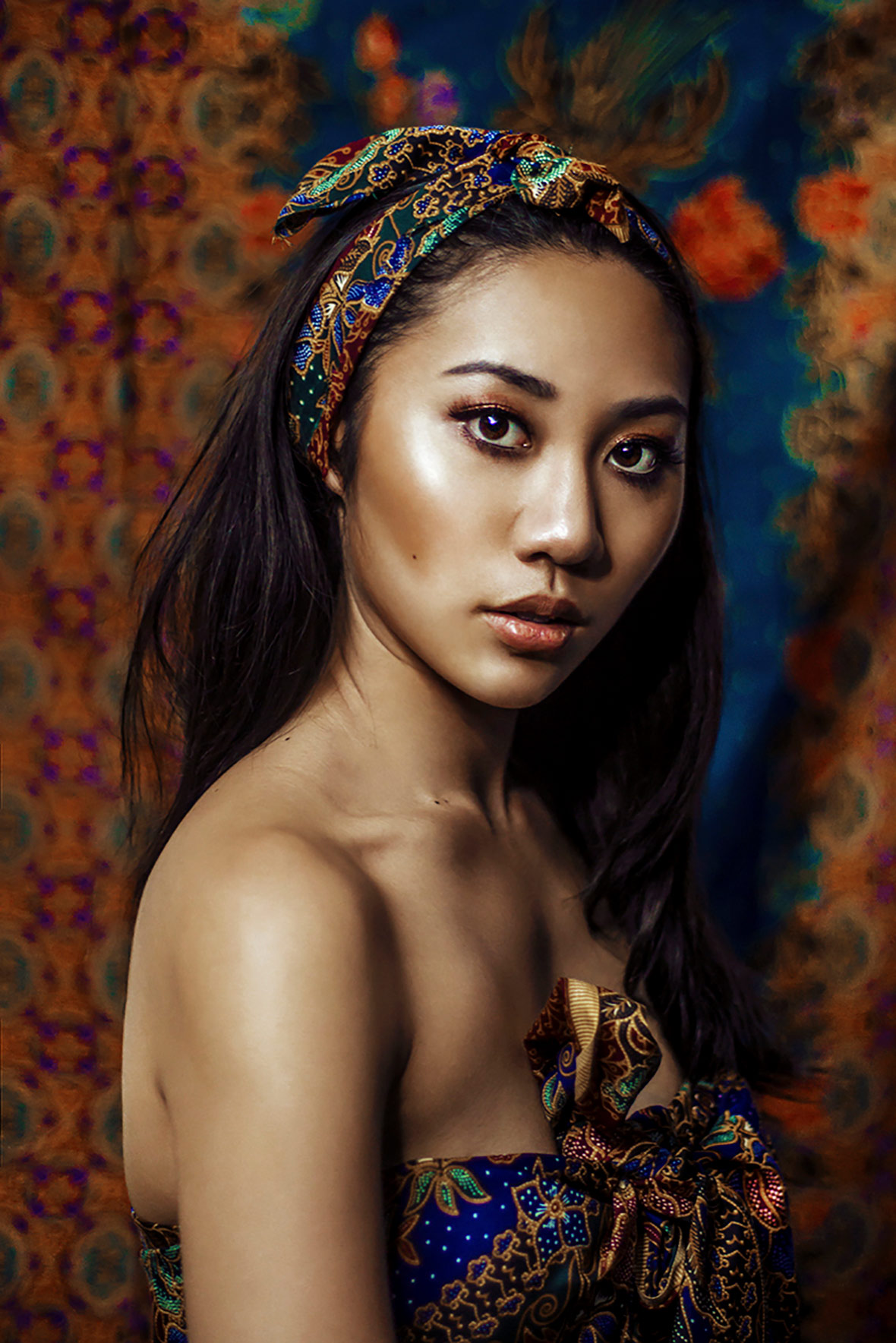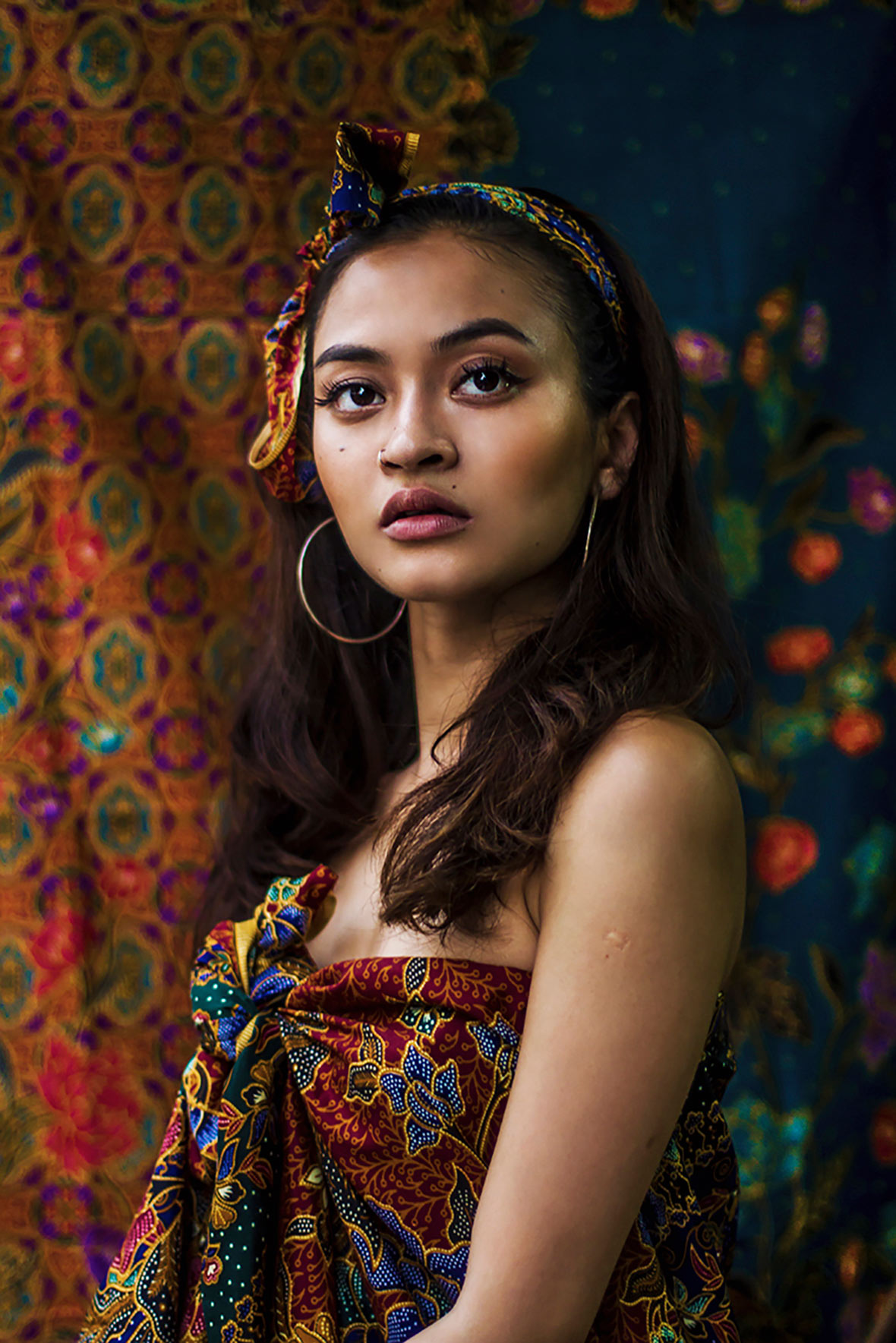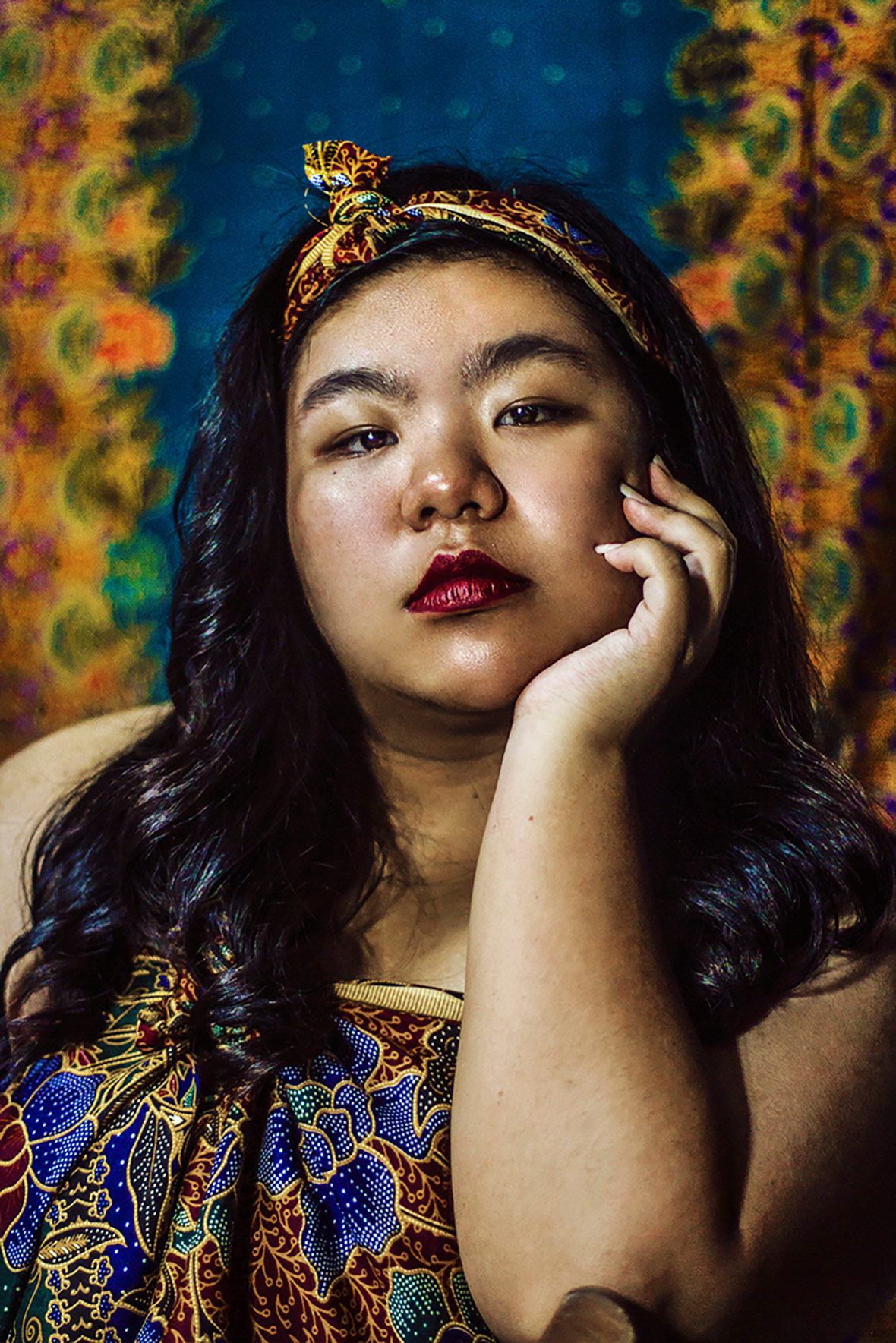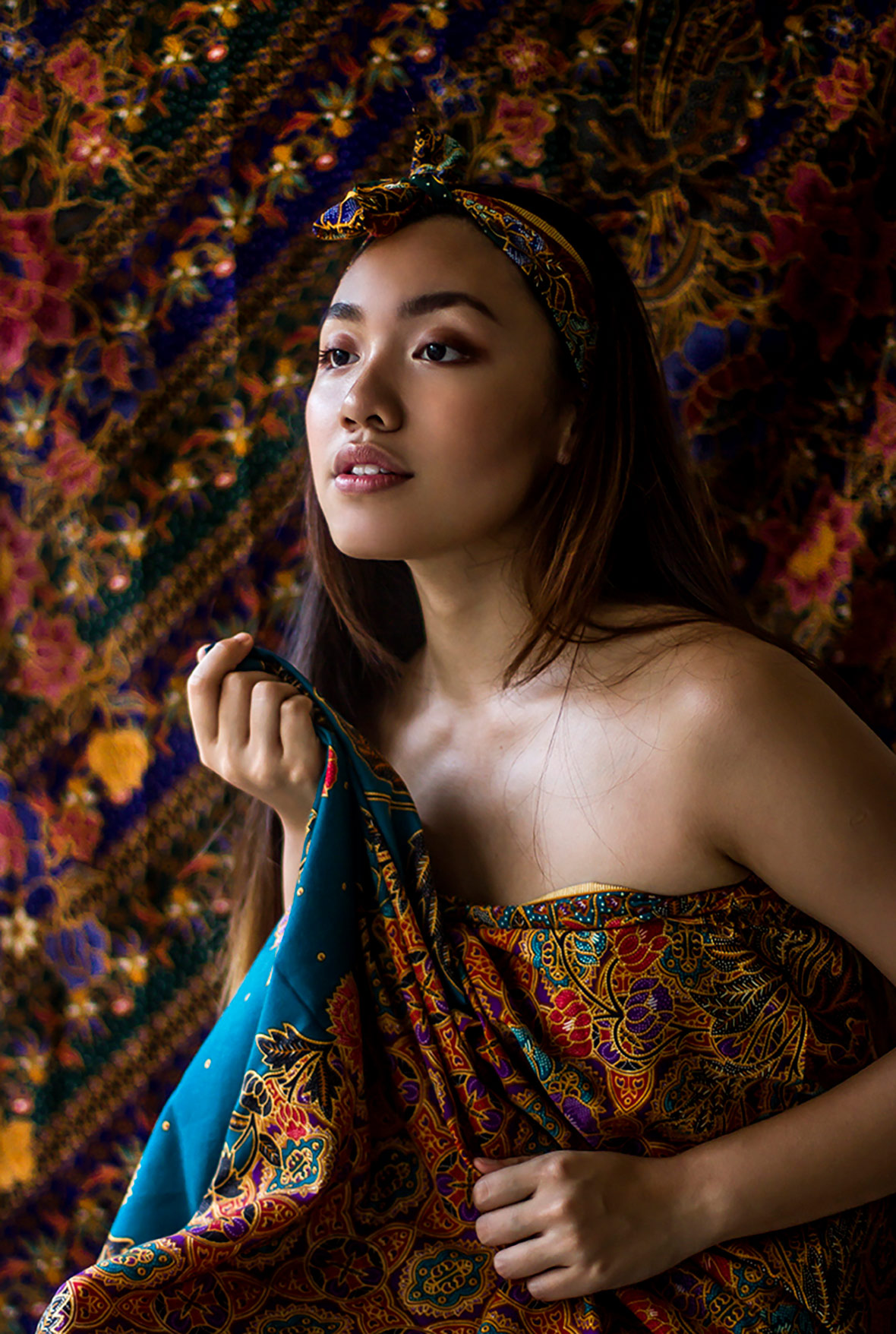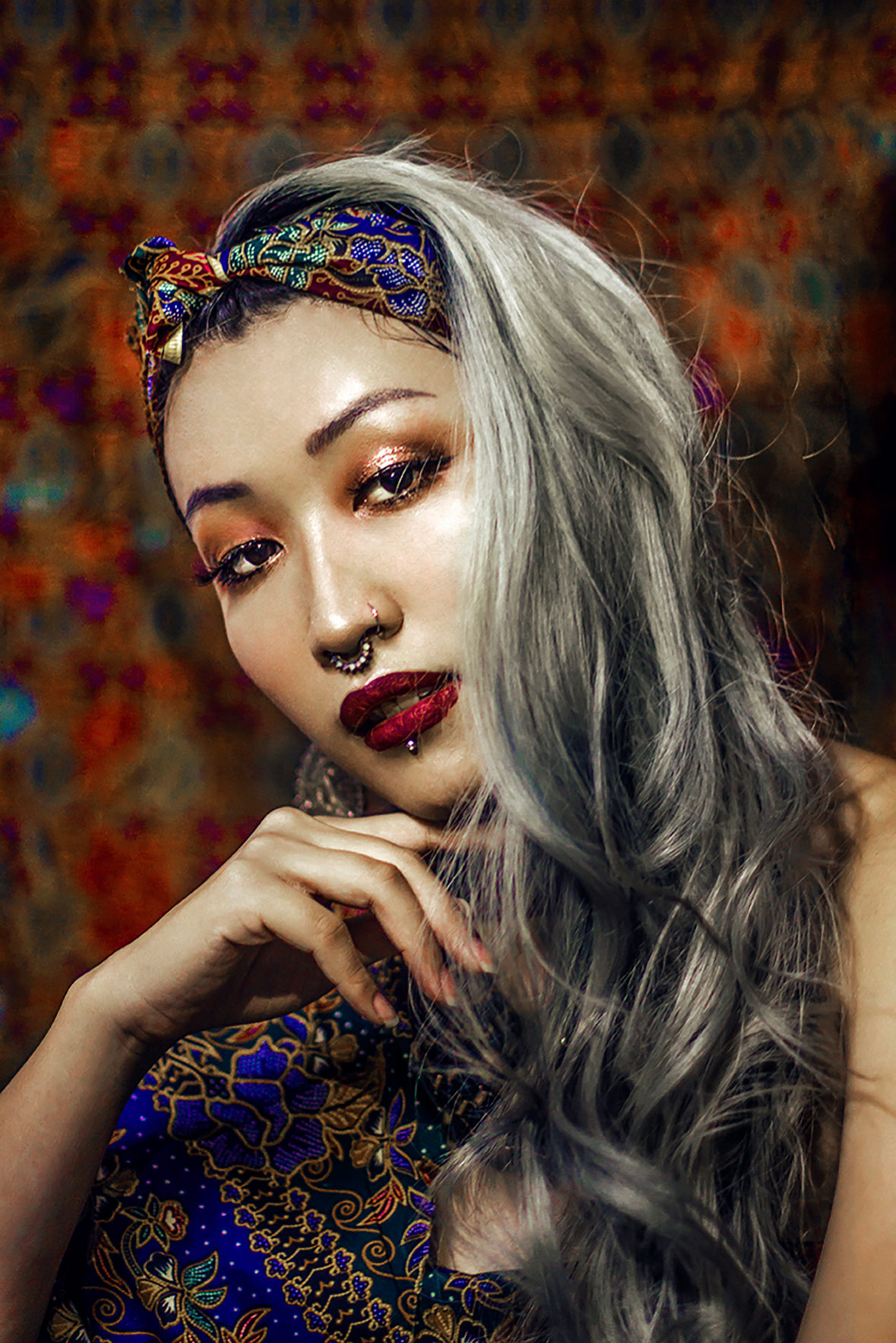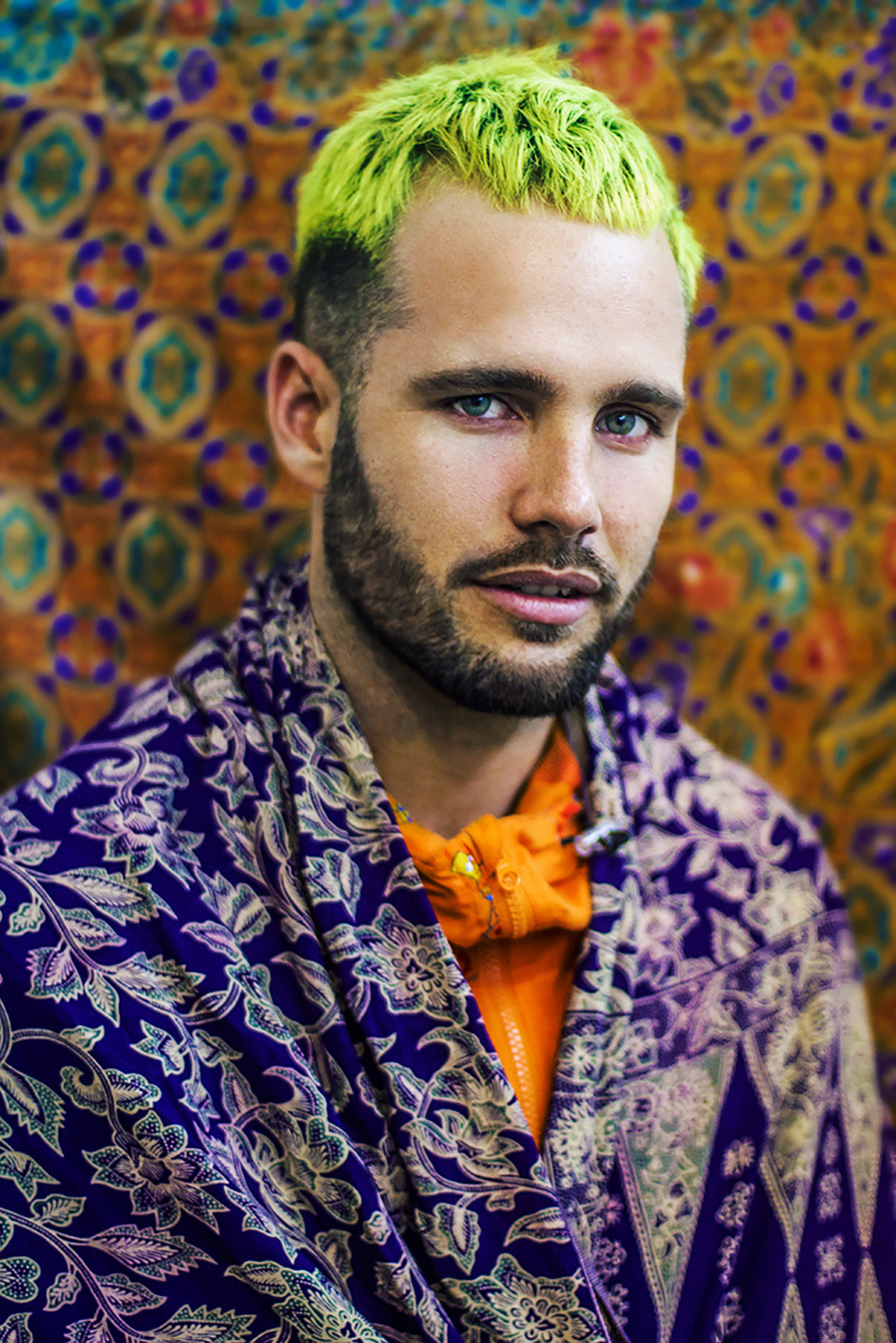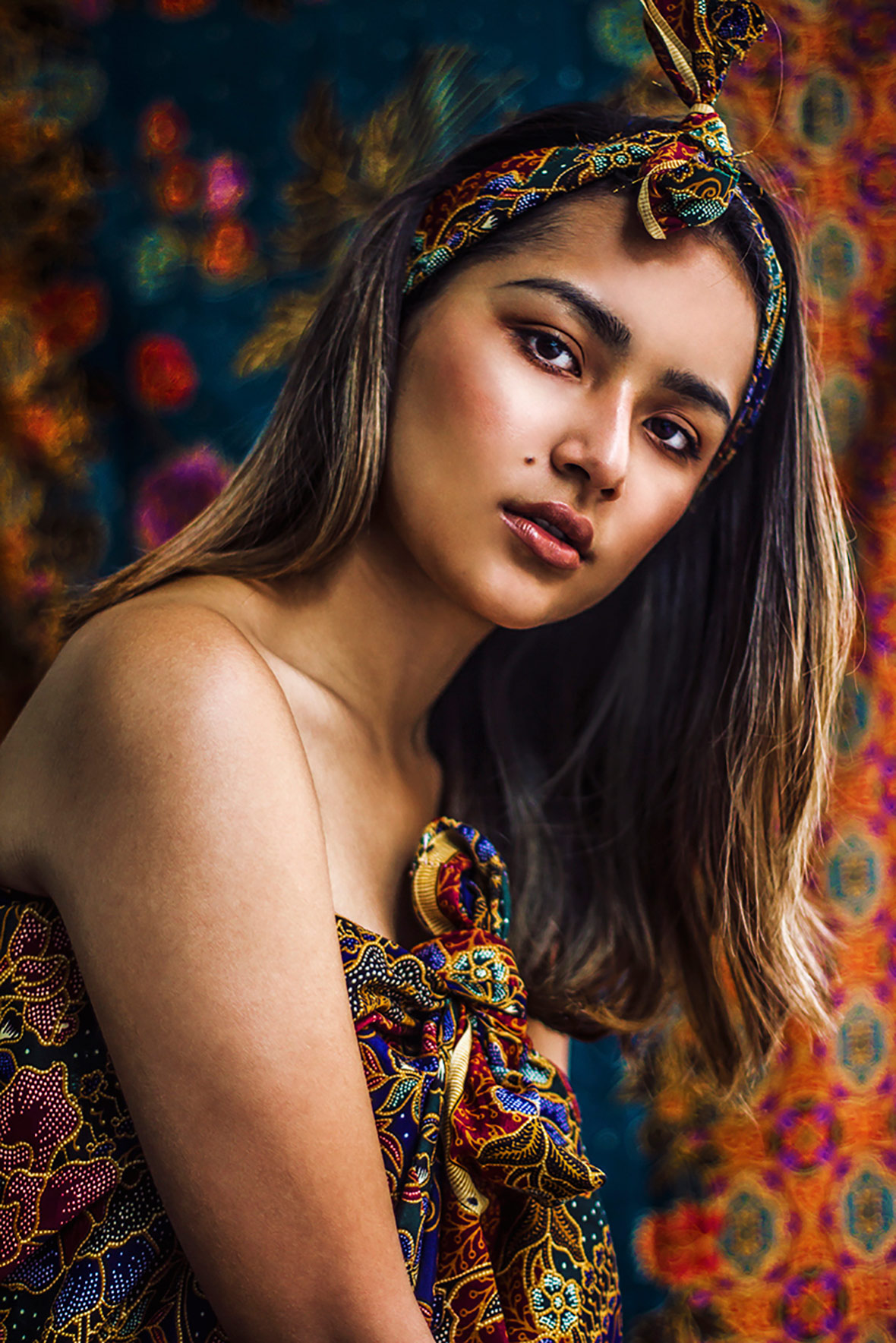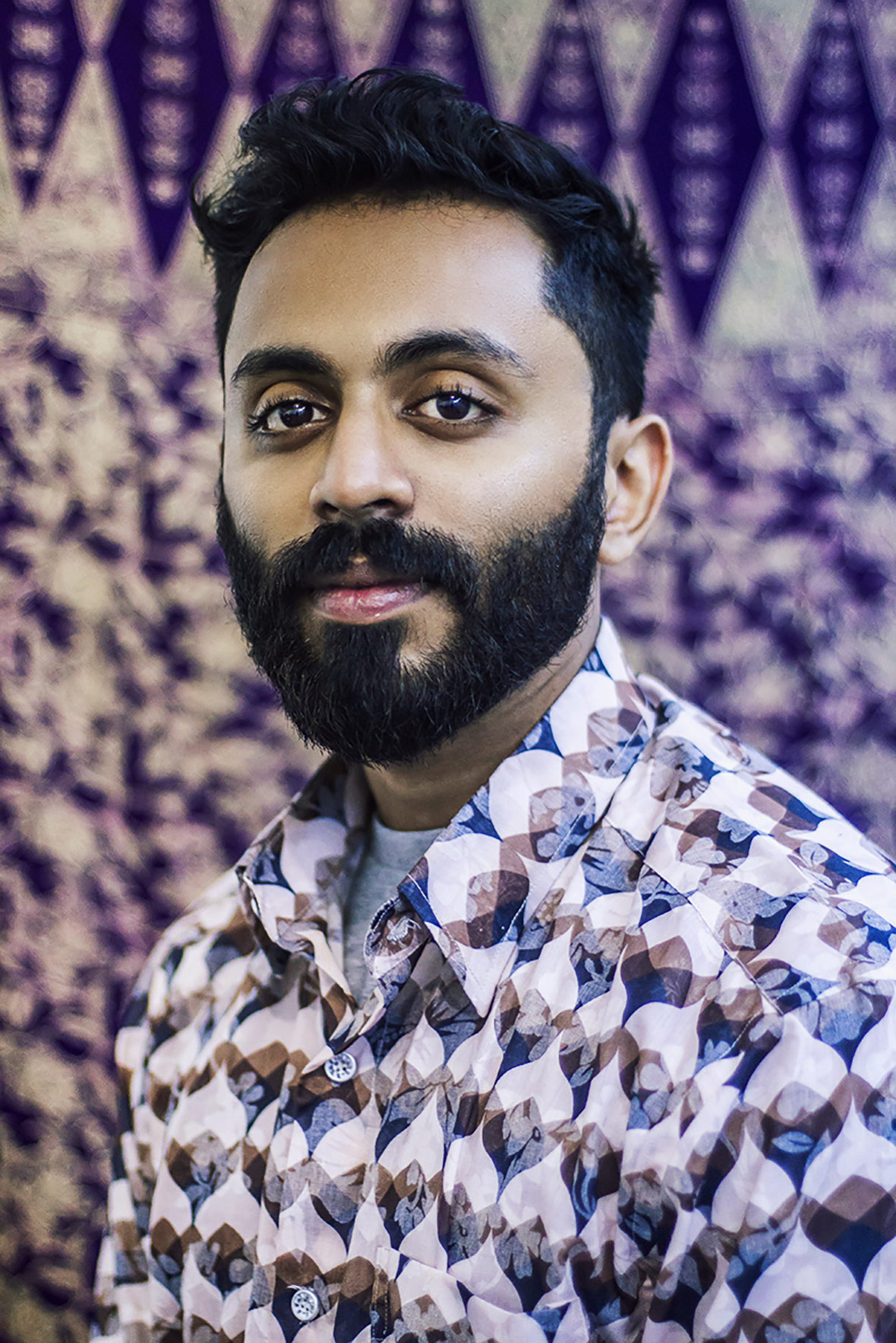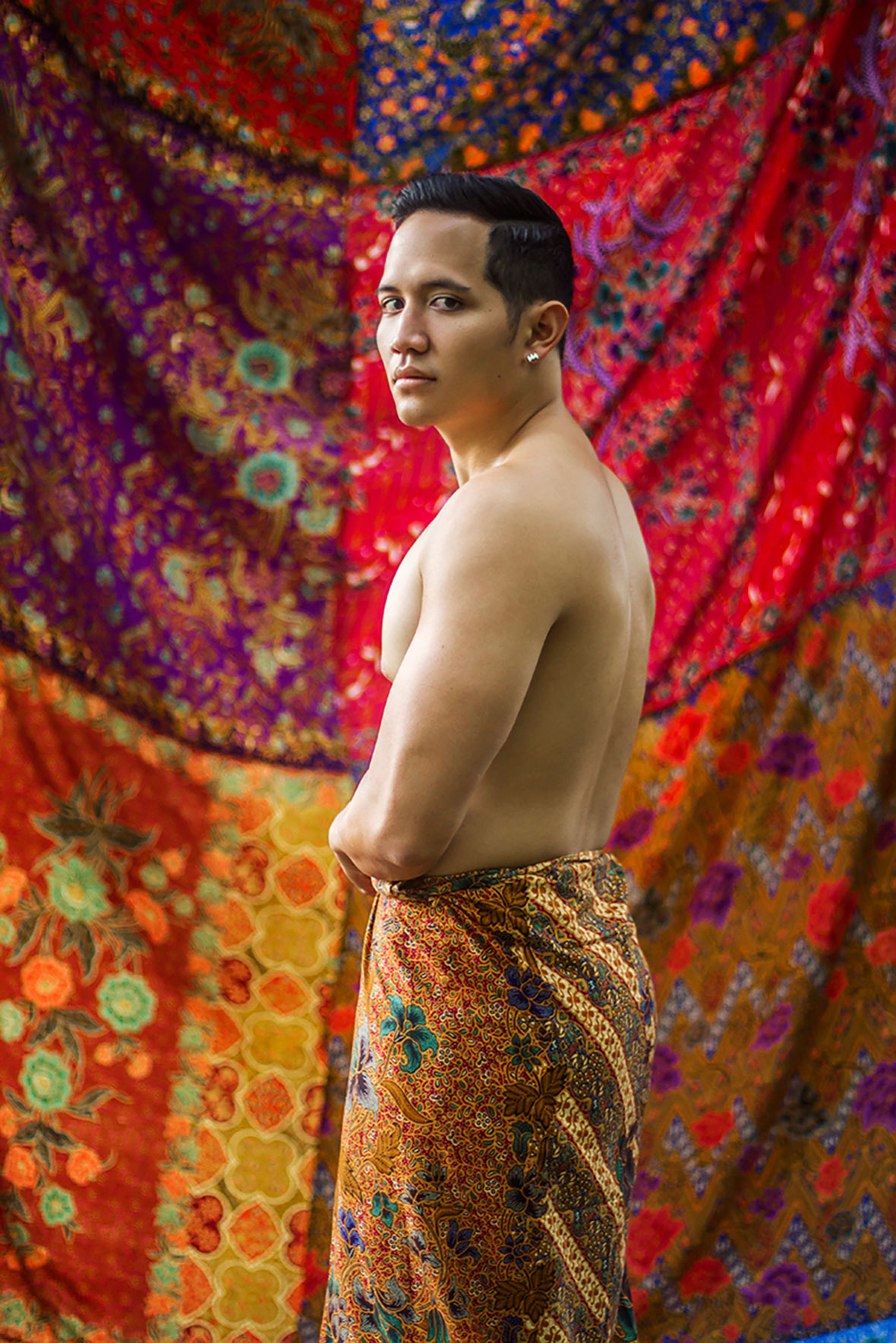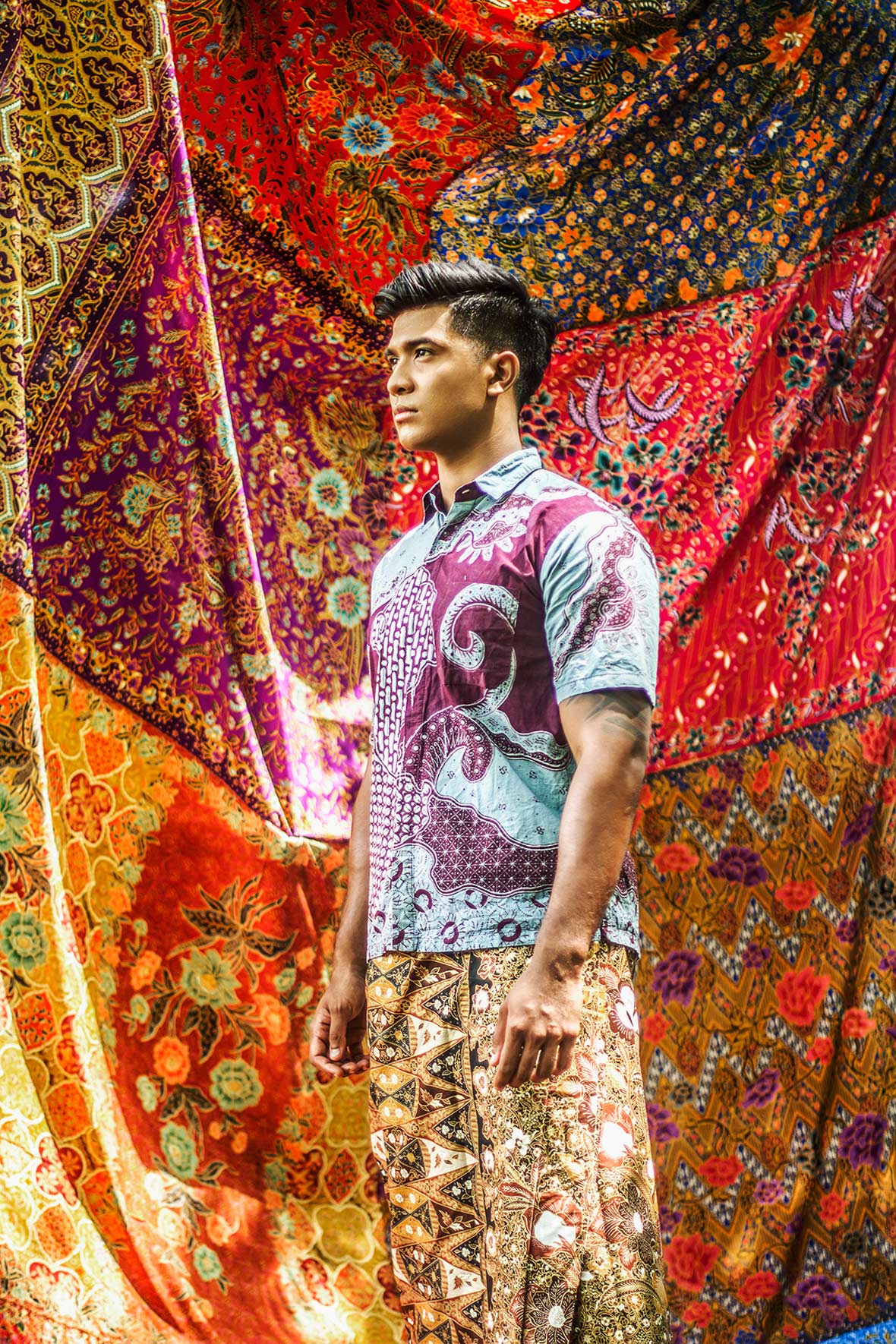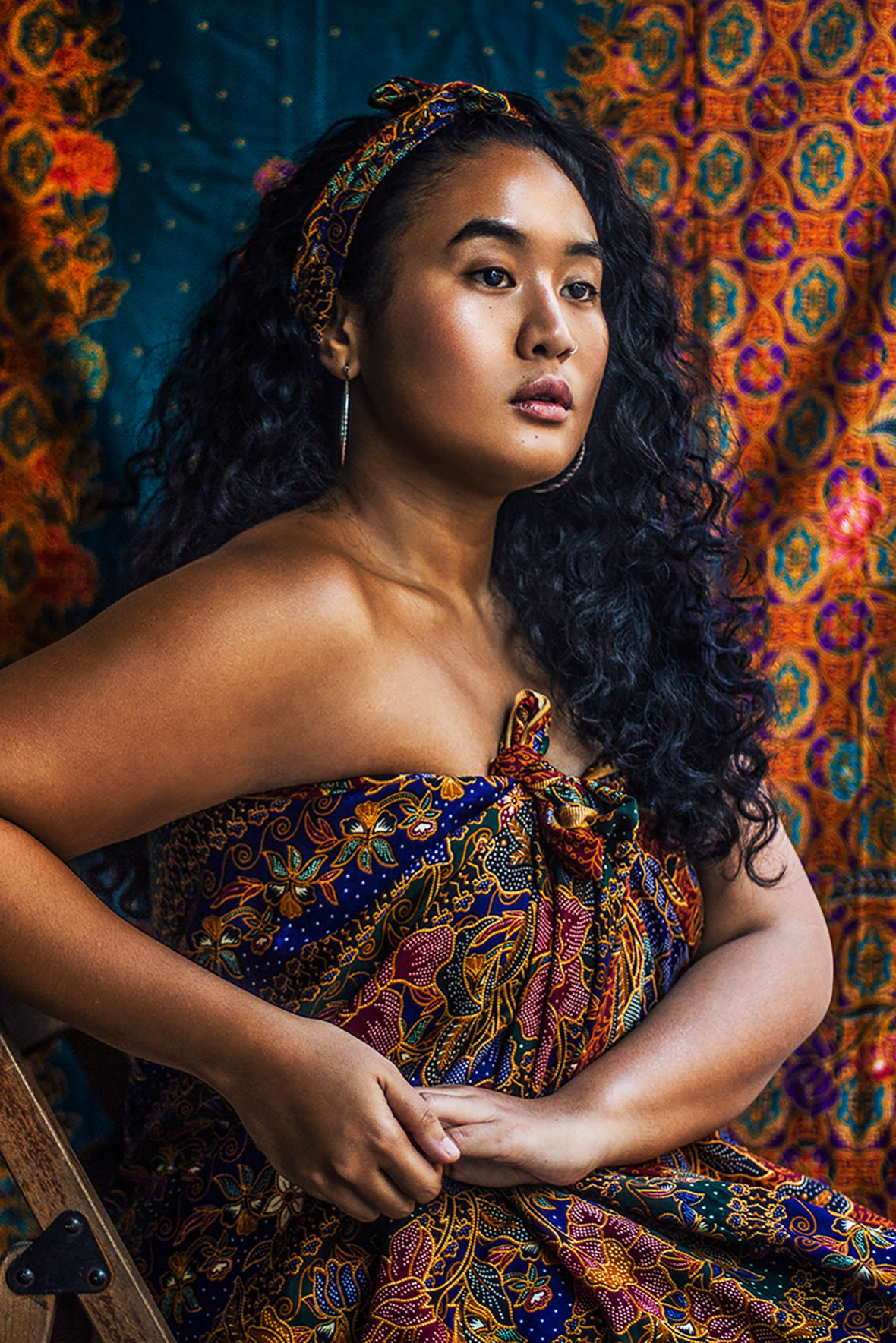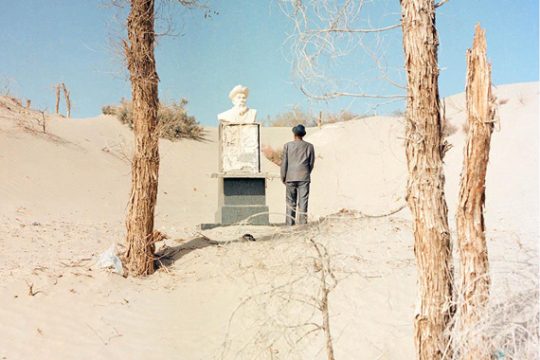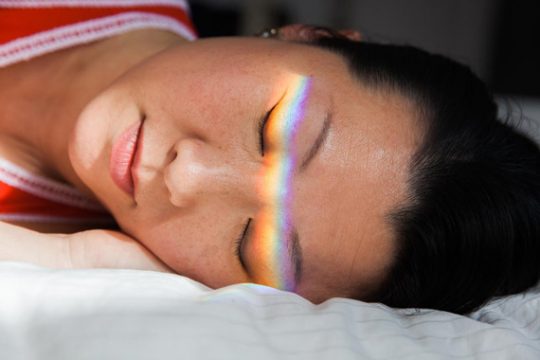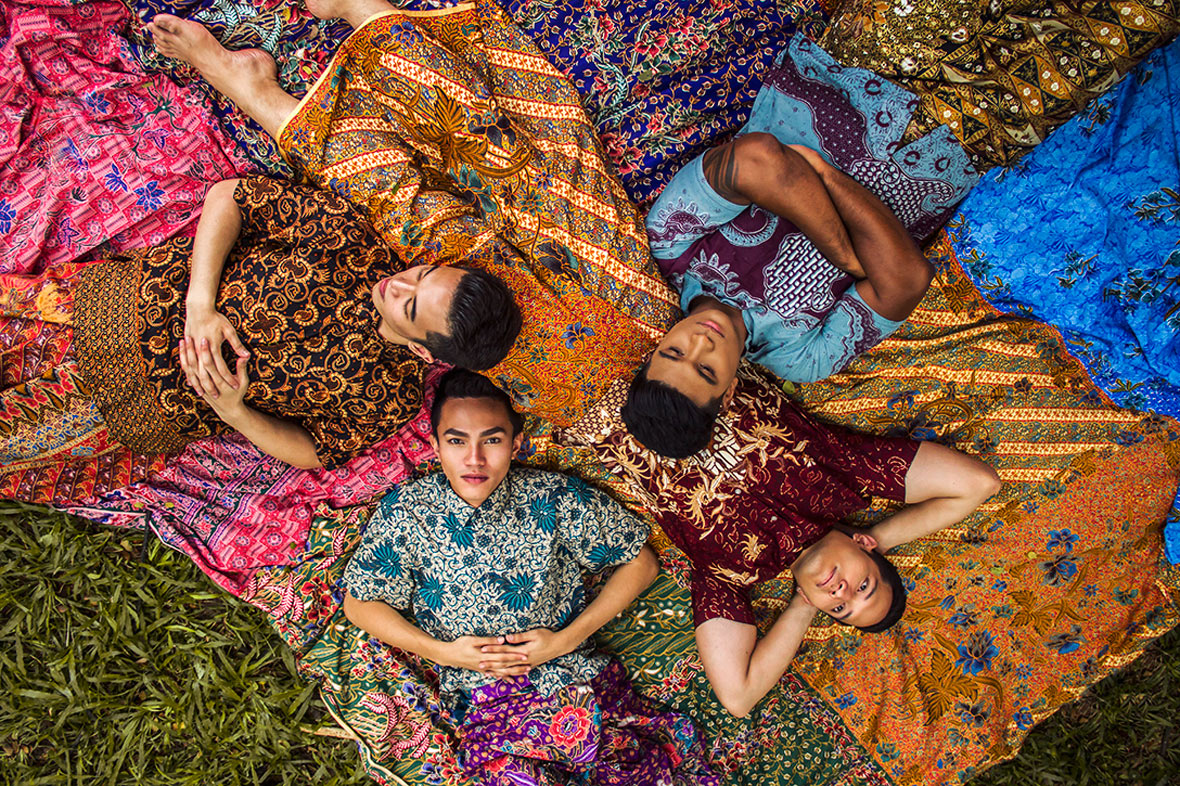
Bright. Bold. Brilliant. Just a few words that might come to mind when you see Daniel Adam’s photography. Currently based in Kuala Lumpur, Adam is inspired by social issues in Malaysia and by the visual stimulation of the country’s daily life, which he saturates with color and turns into something fresh. This is especially true in the vibrant photographs of his Batik series.
In this series, Malaysians of all colors, shapes, and sizes, predominantly women, are clothed in richly patterned fabric dotted with floral motifs and set against a backdrop of the same material. There aren’t any elaborate props, just designs and tones that catch the eye.
鲜艳、大胆、精彩——当你看到 Daniel Adam 充满活力的摄影作品时,脑海可能也蹦出这几个词。Daniel 现在生活在吉隆坡,他以日常生活中看到的视觉刺激以及马来西亚当地社会问题为灵感,创作出一系列满溢色彩与创意、令人眼前一新的作品,譬如他最近的摄影系列《Batik》(《蜡染》)。
在这一组照片中,不同肤色、体形与身材的马来西亚人(大部分为女性)身穿点缀花卉图案的华丽面料,站在同样色彩丰富的背景布前,没有任何精心设计的道具,画面中的色彩与图案已经足够引人入胜。
Adam first started dabbling in photography at the age of 14, armed a compact camera and a budding curiosity about the medium. His curiosity soon grew into passion, and he went on to take a degree in photography at Falmouth University in Cornwall before moving back to Malaysia late last year.
After returning from the UK, Adam felt something was missing. Having spent so much time outside of his home country, he was out of touch with his culture, and wanted a way to reconnect to his roots. For an artist, what better way to do so than to channel his feelings creatively?
Thus the Batik series was born.
Daniel 第一次接触摄影是在 14 岁的时候,带着一部小型相机,他开始好奇地探索着摄影这一种媒介。这种好奇心很快发展成一种热爱,之后,他前往英国康沃尔(Cornwall)的法尔茅斯大学(Falmouth University)修读摄影专业,直到去年年底回到马来西亚。
从英国回来后,Daniel 总觉得若有所失。在国外生活了这么长的时间,他感觉与自己的文化逐渐脱节,他想要重新与自己的文化根脉相联结。对于一个艺术家来说,还能有什么更好的方法来表达情感呢?
由此,《Batik》系列诞生了。
Batik is a cloth-dyeing technique that originated in Indonesia, and it’s used both for traditional garments like sarongs and everyday wear such as men’s shirts. Patterns are first drawn on the cloth with a pencil and then redrawn with a hot wax made from beeswax or paraffin and sometimes mixed with plant resins. The wax acts as a “dye resist,” so that when the fabric is soaked in dye, the treated areas retain their original color, forming a contrast and thus creating the pattern.
The wax is applied to the cloth using a pen-like instrument called a canting or tjanting (in old Dutch orthography) for small dots and fine lines, a stiff brush for larger patterns, or a copper block stamp called a cap for very broad areas. After soaking, the wax is finally scraped or boiled off, and the process is repeated if there are multiple colors involved in the design. Malaysian batik differs from Indonesian Javanese batik in its larger and simpler patterns and its emphasis on brushwork. Most designs are derived from nature and are symbolic.
Batik,蜡染,是一种布染色技术,源自印度尼西亚,既用于制作传统服装,如“纱笼”(sarong,裹在腰或胸以下的长条布裙),也用于制作男式衬衫等日常服装。先用铅笔将图案画在布料上,然后用蜂蜡或石蜡(有时还会加上植物树脂)制成的热蜡重新绘画。蜡的作用是防止染色,所以当织物浸泡在染料中,有蜡的地方就能保留原来的颜色,从而通过不同色彩的对比,构成各种图案。
涂蜡时会用到不同的工具。用以绘出小点和细线的笔,是一种名为 canting 或 tjanting(古荷兰语)的笔尖式蜡染工具,而硬毛刷则用来画较大图案,被称为“盖子”(cap)的铜块印章,则用来印画更大面积的图案。浸泡后,蜡最终会被刮掉或煮掉,如果布料的设计涉及多种颜色,就要多次重复这个过程。
不同于印度尼西亚爪哇岛蜡染,马来西亚蜡染的图案更大、更简洁,同时更强调图案的笔触,大多数的图案设计灵感源于自然界,蕴含象征意义。
Daniel sourced his batik pieces from a corner shop in Chinatown for RM10 apiece, and then just started shooting. His models are set against giant sheets of batik, with clothes and headpieces made of the traditional fabric. But the portraits themselves are far from traditional, with faces of Malaysians with skin and features that show the many branches of the country’s family tree.
This blended aesthetic is fully intentional. Instead of photographing only the three “main” races of Malaysia—Chinese, Malay, and Indian—Adam wanted to break down racial barriers by including people of mixed heritage, like Chinese-Malay, Indian-Chinese, or Eurasian. What became the unifying point was Malaysian-ness itself, and batik stood in as its flag.
Daniel 在唐人街的街角小店以每件 10 马币的价格购买蜡染面料,然后直接开始拍摄。他让模特穿上色彩鲜艳的服装与头饰,然后站在巨幅的 batik 蜡染布前。然而不同于传统的肖像摄影,他的这一系列作品展现了来自不同种族、文化的马来西亚人们的面孔和特色。
这种多元化的美感正是 Daniel 的创作意图。他不想只拍摄马来西亚的三大种族,即华人、马来人与印度人,他希望打破种族壁垒,拍摄那些不同种族的混血儿,如中马混血、中印混血或欧亚混血儿,表达出他们之间的统一点,即他们作为马来西亚人的身份,而 batik 蜡染可以说是这一主题的鲜明代表。
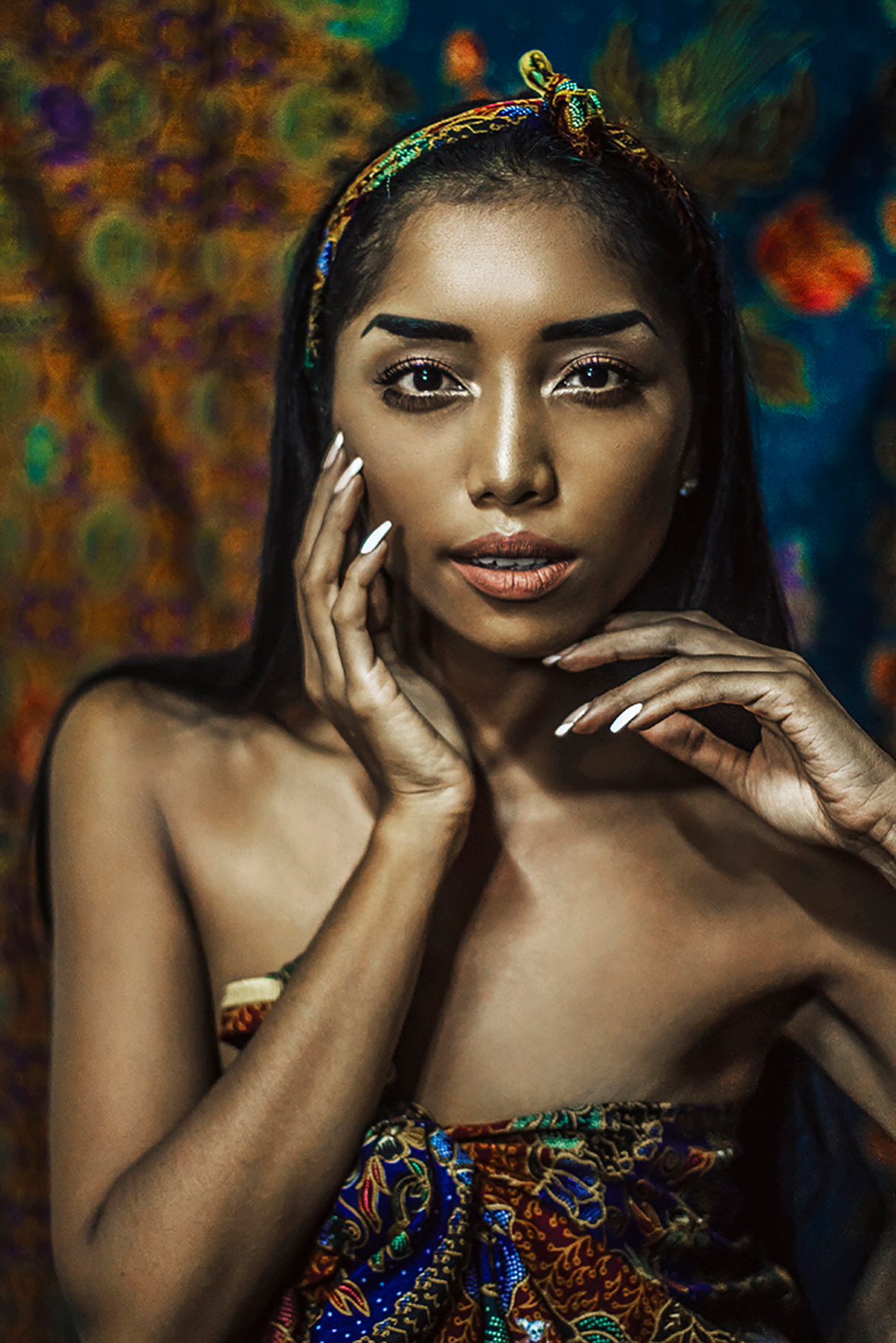
“I wanted to showcase diversity,” Daniel says about his series and his inclusion of every kind of race in the photographs. “I want to take away all the barriers and labels that we put on each other—for everyone to see that we just belong to one community. This beautiful and traditional art form, this design—it’s Malaysian, so it’s all linked, it brings everyone together. It’s not just about educating others and myself on batik. It’s about this connection, that we’re all Malaysian.”
“我想展示出多元化。” Daniel 解释这个系列的创作初衷以及他为什么要拍摄不同种族的人群,“我想把人们所设立的所有隔阂与标签都去掉,让每个人明白,我们全都同属一个社区。而这种美丽的传统艺术、它的设计,代表了马来西亚,它是所有人的连接点,将大家联系在一起。这不仅仅是在向别人和我自己宣传 batik 蜡染,更重要是让人们联结起来,我们都是马来西亚人。”
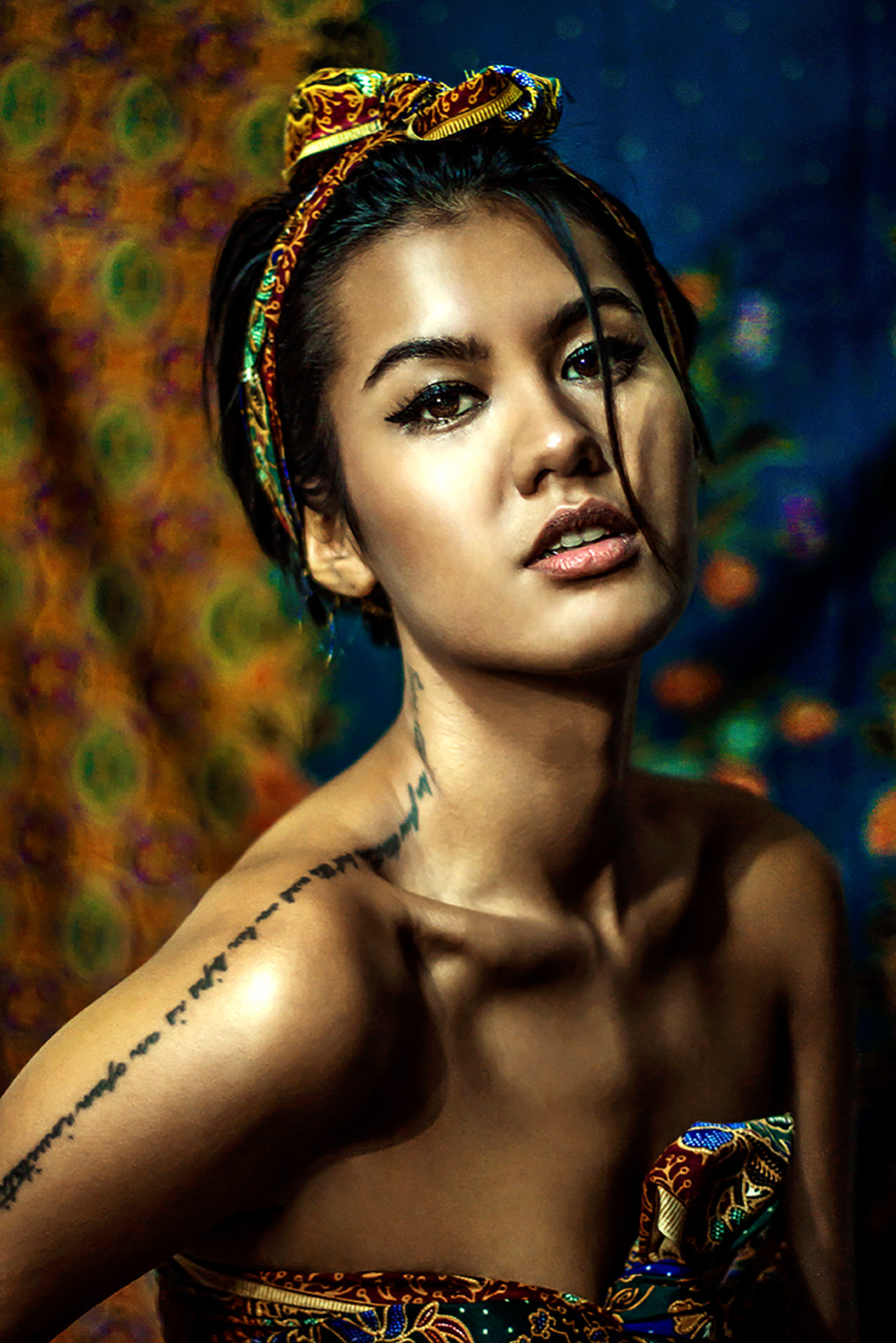
It didn’t take long for this series, initially a self-education and reconnection project, to become a full-blown celebration of Malaysian diversity. On Hari Merdeka, the Malaysian Independence Day, celebrated every year on August 31, the Batik Series was on full display alongside works by two other fellow local photographers, Emma Khoo and John Kam, in an exhibition at APW in Bangsar, a suburb of Kuala Lumpur. This exhibition aimed to illustrate what it means to be Malaysian: differences were recognized, celebrated, and brought together in a single exhibition.
It was truly a moment of reconnection, as Adam fondly remembers. “It was really nice for opening night—especially since we only planned it a week and a half before the event!” he says. “You got to see different people from different cultures and religions coming together and mingling—that’s the Malaysia that you expect to see.”
很快,这个充满教育意义和促进社会团结的项目,也成为了对马来西亚多元文化的一次盛大展示。每年 8 月 31 日是马来西亚独立日(Hari Merdeka),为了庆祝这个国家最重要的日子,《Batik》与其它两名当地摄影师 Emma Khoo 和 John Kam 的作品一起,在吉隆坡的郊区孟沙 APW 的展览中共同展出。本次展览旨在表达“何为马来西亚人”的主题。在这个展览中,多元化得到了承认并被呈现出来,且将来看展的人们牢牢凝聚起来。
这是真正意义上的重新联结。Daniel 开心地回忆道:“开幕夜真的特别棒,尤其那是我们在活动举办一周半之前才开始筹备的!来自不同文化和宗教的人们全都聚集在一起,这正是我们所期望看到的马来西亚。”

